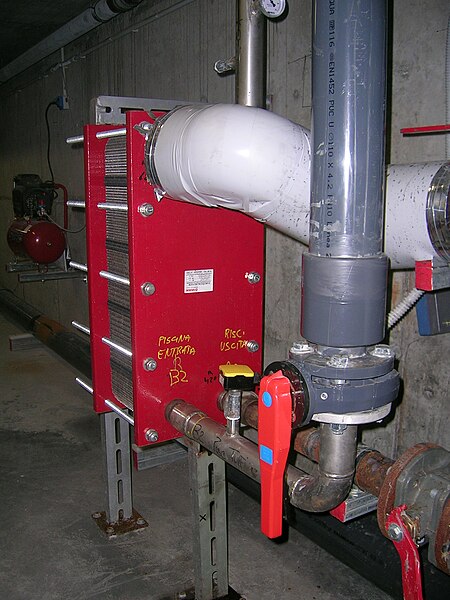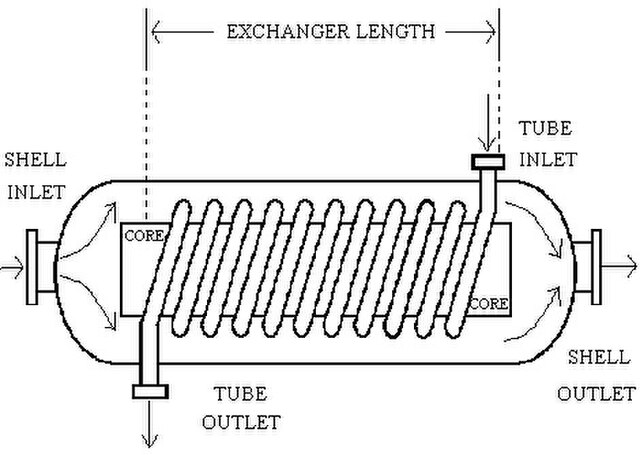A heat sink is a passive heat exchanger that transfers the heat generated by an electronic or a mechanical device to a fluid medium, often air or a liquid coolant, where it is dissipated away from the device, thereby allowing regulation of the device's temperature. In computers, heat sinks are used to cool CPUs, GPUs, and some chipsets and RAM modules. Heat sinks are used with other high-power semiconductor devices such as power transistors and optoelectronics such as lasers and light-emitting diodes (LEDs), where the heat dissipation ability of the component itself is insufficient to moderate its temperature.
A fan-cooled heat sink on the processor of a personal computer. To the right is a smaller heat sink cooling another integrated circuit of the motherboard.
Typical heatsink-fan combination found on a consumer laptop. The heatpipes which contain a working fluid make direct contact with the CPU and GPU, conducting heat away from the component and transferring it to the fin-stack mounted on the exhaust port of the cooling fan. The fin-stack acts as a fluid-to-fluid heat exchanger transferring thermal energy from the working fluid within the heatpipe(s) to ambient air at dead-state condition.
A heat sink (aluminum) with its heat pipes (copper) and fan (black)
Power transistor heat sinks. Left for TO-3 package, right for TO-220 package, middle for two TO-220.
A heat exchanger is a system used to transfer heat between a source and a working fluid. Heat exchangers are used in both cooling and heating processes. The fluids may be separated by a solid wall to prevent mixing or they may be in direct contact. They are widely used in space heating, refrigeration, air conditioning, power stations, chemical plants, petrochemical plants, petroleum refineries, natural-gas processing, and sewage treatment. The classic example of a heat exchanger is found in an internal combustion engine in which a circulating fluid known as engine coolant flows through radiator coils and air flows past the coils, which cools the coolant and heats the incoming air. Another example is the heat sink, which is a passive heat exchanger that transfers the heat generated by an electronic or a mechanical device to a fluid medium, often air or a liquid coolant.

Partial view into inlet plenum of shell and tube heat exchanger of a refrigerant based chiller for providing air-conditioning to a building
Shell and tube heat exchanger
An interchangeable plate heat exchanger directly applied to the system of a swimming pool
Helical-Coil Heat Exchanger sketch, which consists of a shell, core, and tubes (Scott S. Haraburda design)








